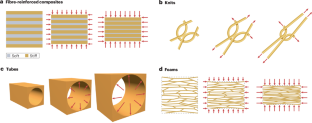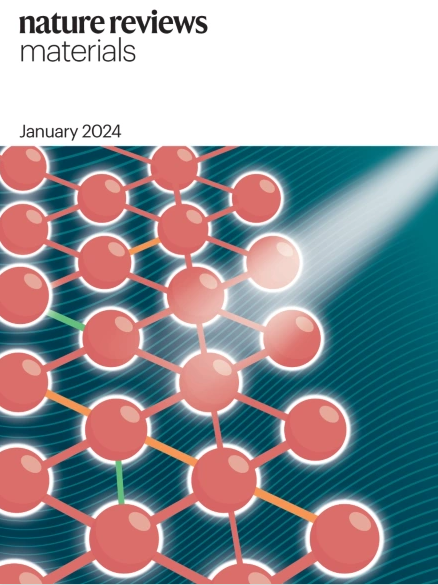Shape-morphing metamaterials
IF 86.2
1区 材料科学
Q1 MATERIALS SCIENCE, MULTIDISCIPLINARY
引用次数: 0
Abstract
Mechanical metamaterials use geometric design to achieve unconventional properties, such as high strength at low density, efficient waveguiding and complex shape morphing. The ability to control changes in shape builds on the complex relationship between geometry and nonlinear mechanics, and opens new possibilities for disruptive technologies across diverse fields, including wearable devices, medical technology, robotics and beyond. In this Review, we examine the current state of the field of shape-morphing metamaterials and propose a unified classification system for the mechanisms involved, as well as the design principles underlying them. Specifically, we explore two main categories of unit cells — those that exploit structural anisotropy and those that exploit internal rotations — and two potential approaches to tessellating these cells, based on kinematic compatibility or geometric frustration. We conclude by discussing the available design tools and highlighting emerging challenges in the development of shape-morphing metamaterials. Shape-morphing metamaterials use geometric design to achieve advantageous properties, enabling innovations in fields from robotics to wearable devices. This Review proposes a unified classification of the design principles underlying shape-morphing behaviour, discusses available design tools and highlights emerging challenges in the development of shape-morphing metamaterials.


Shape-morphing超材料
机械超材料利用几何设计来实现非常规的性能,如低密度下的高强度、高效的波导和复杂的形状变形。控制形状变化的能力建立在几何和非线性力学之间的复杂关系之上,并为不同领域的颠覆性技术开辟了新的可能性,包括可穿戴设备、医疗技术、机器人技术等。在这篇综述中,我们研究了变形超材料领域的现状,并提出了一个统一的分类系统,涉及的机制,以及它们的设计原则。具体来说,我们探讨了两个主要类别的单元格——那些利用结构各向异性和那些利用内部旋转的单元格——以及基于运动学兼容性或几何挫折的两种潜在的单元格镶嵌方法。最后,我们讨论了可用的设计工具,并强调了在变形超材料的发展中出现的挑战。
本文章由计算机程序翻译,如有差异,请以英文原文为准。
求助全文
约1分钟内获得全文
求助全文
来源期刊

Nature Reviews Materials
Materials Science-Biomaterials
CiteScore
119.40
自引率
0.40%
发文量
107
期刊介绍:
Nature Reviews Materials is an online-only journal that is published weekly. It covers a wide range of scientific disciplines within materials science. The journal includes Reviews, Perspectives, and Comments.
Nature Reviews Materials focuses on various aspects of materials science, including the making, measuring, modelling, and manufacturing of materials. It examines the entire process of materials science, from laboratory discovery to the development of functional devices.
 求助内容:
求助内容: 应助结果提醒方式:
应助结果提醒方式:


